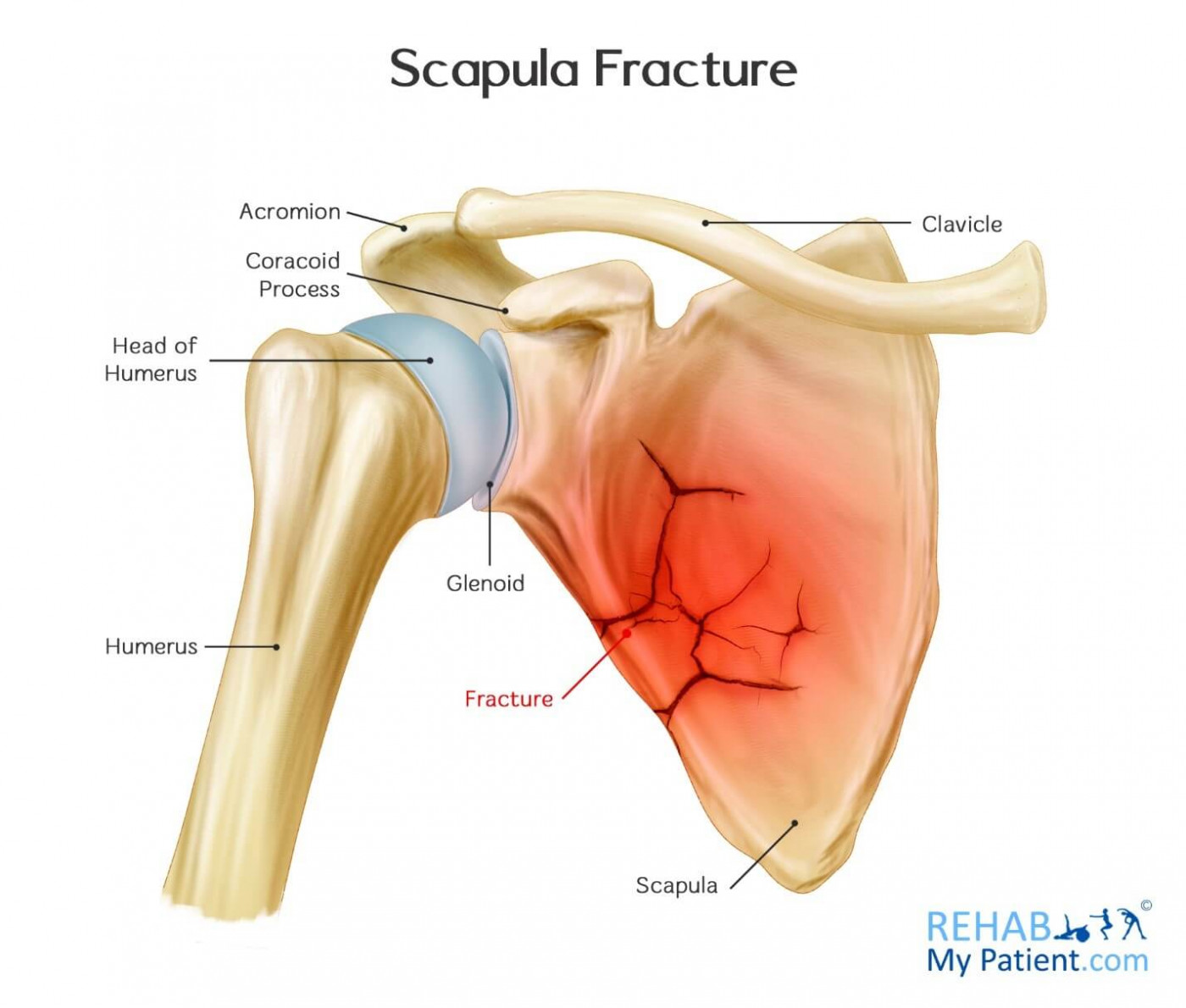Scapula Fracture
Opublikowano dnia 06th May 2017 / Opublikowano w: Odcinek piersiowy kręgosłupa , Ramię

Mobile, triangular and protected by an intricate system of surrounding muscles, the scapula isn’t broken all that often. These fractures account for less than 1 percent of all broken bones.
Blunt trauma, high-energy, falling from an elevated height or being involved in an automobile accident are all causes of fractures in the scapula. Head injuries, broken ribs, lung or spinal cord damage can all happen at the same time.
Scapula Fracture Anatomy
The shoulder blade (scapula) is located in the upper back, and sits on top of the ribs. The term scapula literally means skapulare = to dig, because the Greek anatomists who named it thought that the shoulder blade looked like a spade.
The shoulder blade has a ridge going along it known as the spine of the scapula.
There are many muscles that sit around the scapula, most notably the rotator cuff muscles, but also some larger muscles such as the latissimus dorsi, trapezius, and rhomboids.

How to Treat a Scapula Fracture:
- Sling
Non-surgical treatment using a simple sling has often proven beneficial for overcoming scapula fractures. Immobilization will hold your shoulder securely in place to allow the bone time to heal.
- Exercises
Your shoulder might feel stiff when the sling is removed, which is why it is important to start movement exercises right away. Passive stretching exercises need to be continued until the shoulder has complete range of motion in it. Depending on how severe the fracture is, you might need to start exercises within a week after the injury, while others require two to four weeks before beginning the exercises. Expect to spend six months to one year recovering from the injury. Speak to your therapist about exercises.
- Surgery
In certain situations, you might need surgery to have screws and plates put into place to hold the bone in place. Everything depends largely upon the type of fracture and how severe it is.
Tips:
- Avoid engaging in any high-risk activities where you are prone to falling or having a severe force applied to the scapula.
- Whenever participating in any sporting activities, make sure to protect your body with proper technique, coaching, and equipment.
- Street fighting, especially when blunt objects are used such as bricks, bats and boards, should be avoid at all costs as this is one of the common causes of a fractured scapula. Cage fighting or mixed martial arts can also be risky for fractures.
- Contact sports like dirt bike racing, car racing, hockey and football are all those types of events where you could wind up getting a fractured scapula because of being hit into something.
Zapisać się
Zarejestruj się już teraz, aby skorzystać z bezpłatnego okresu próbnego!
Zacznij korzystać z Rehab My Patient już dziś i zrewolucjonizuj proces przepisywania ćwiczeń, aby zapewnić sobie skuteczną rehabilitację.
Rozpocznij 14-dniowy bezpłatny okres próbny